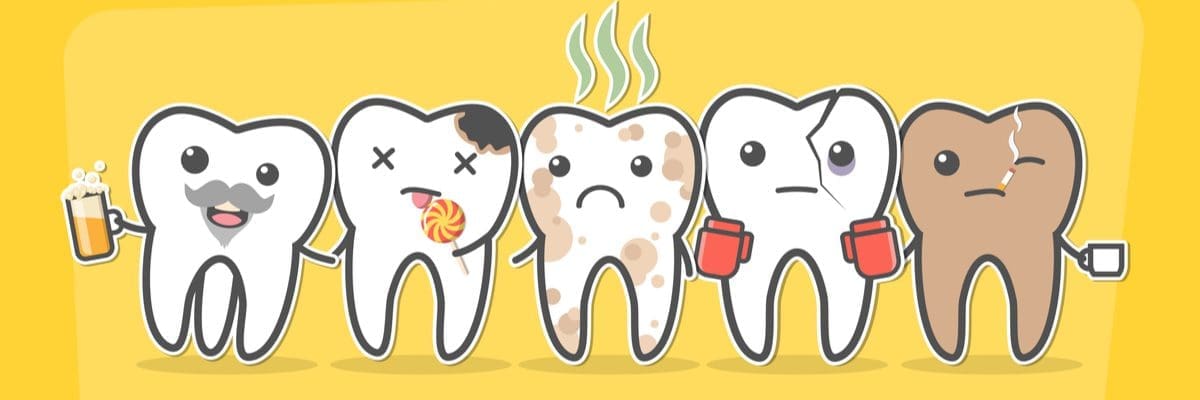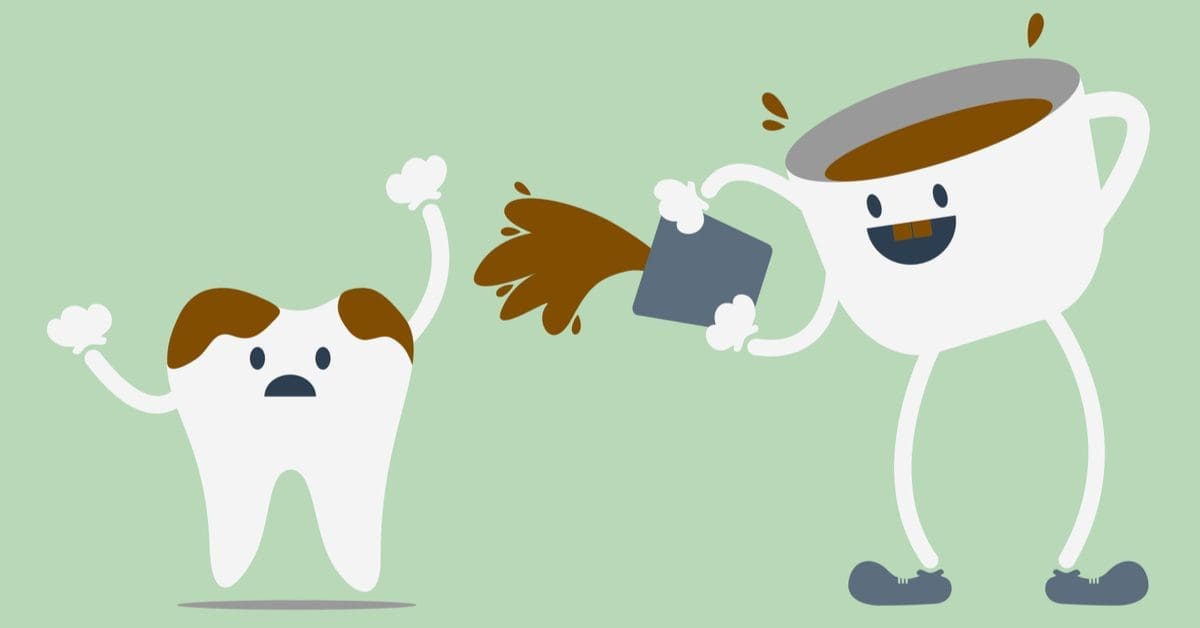Types of Teeth Stains: Intrinsic and Extrinsic Stains
Do you have stained teeth and want to fix them? If so, it is recommended to visit your dentist to learn which type of teeth staining you have and what your treatment options are. Certain treatments can lighten your teeth a few shades, while other treatments, can transform your dull-looking teeth into a dazzling white smile.
Do you know what intrinsic and extrinsic stains are? Most people do not so you are not alone. Below we will let you know what they are and their differences as well as various treatment options for both.
Deep-Set Intrinsic Stains
Deep intrinsic tooth stains happen when the inner layer of the tooth becomes discolored. These stains can occur when certain medications are taken or there is an internal issue within one’s body. It is often caused by the antibiotic known as tetracycline. It is possible for your teeth to be stained because your mother took tetracycline for a bacterial infection when she was pregnant with you.
Antibiotic-related dental staining makes the teeth look brown or gray. Because this type of staining is deeply set inside your enamel, bleaching products are ineffective in eliminating them. If you have intrinsic stains caused by your mother’s use of tetracycline, your dentist may recommend dental veneers, which are thin resin jackets that are placed over your teeth to hide dental imperfections and stains.
Bonding is another treatment option for intrinsic dental stains. During the bonding procedure, your dentist covers the stain with a composite product, which is then hardened by using ultraviolet light.
Bonding and veneers are also effective treatment options for tooth discoloration caused by acid erosion of the enamel. When your enamel becomes thin and wears away, your dentin, which is dark yellow, will be visible.
After getting veneers or dental bonding, simply follow your normal dental hygiene routine of brushing and flossing. If you have porcelain veneers, be careful when eating hard foods because they can damage the veneers and cause them to fall off.
Surface Extrinsic Stains
Extrinsic dental stains occur on the outside of your teeth on the tooth enamel. For this type of stain, at-home bleaching kits or whitening strips may help diminish and remove the stains. These at-home kits will take longer and are not always effective. If you are not satisfied with your in-home bleaching kit, your dentist can recommend their whitening treatments, which will be much more beneficial to your individual circumstance.
While the bleaching products used in professional whitening treatments at your dentist’s office contain the same active ingredient as over-the-counter whitening products, the concentration is higher. Because of this, the effects may be more dramatic when you get your teeth whitened at your dentist’s office. While bleaching may cause dental sensitivity after your procedure, it will fade away after a couple of days.
Other conservative treatments for superficial dental stains include brushing your teeth with baking soda and using whitening toothpastes that contain hydrogen peroxide. There are certain things you can do to prevent extrinsic tooth stains. Limiting your intake of foods and drinks such as coffee, tea, cola, red wine, cherries, and other highly pigmented foods will help prevent surface stains on your teeth. Avoiding tobacco products will also help prevent dental stains.
Also, if you take liquid iron to treat anemia, ask your doctor about diluting it with water and drinking it through a straw. When liquid iron makes contact with your teeth, it can cause deep stains. Consuming it through a straw will minimize this risk.
Do You Need Help To Hide or Remove Your Intrinsic and Extrinsic Stains?

If your teeth are stained, make an appointment with your dentist to determine which cosmetic procedure is best for your situation. It is important to note that while cosmetic whitening may be essential to your self-esteem, it is not considered a necessary dental procedure, and therefore, may not be covered under dental insurance.
Are you looking for a top-rated dentist to help you get rid of your intrinsic and extrinsic stains? Get in touch with Suburban Essex Dental. Our office is located in West Orange, New Jersey in Essex County.
We are approaching the ninth year of being voted top dentist in the NJ Monthly magazine.
Please note that since the COVID-19 pandemic, we have added online dental consultations to our long list of dental services.





